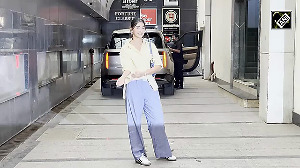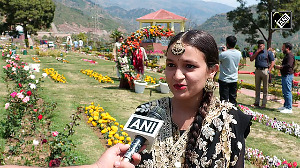Mumbai's museum is no longer a mere showcase for objects of history, but an active agent in prolonging its life, reports Ranjita Ganesan.

For some years now, unbeknownst to the public, a 'hospital' has existed within the confines of the Chhatrapati Shivaji Maharaj Vastu Sangrahalaya.
The treatment provided at the museum art conservation centre, however, is for centuries-old paintings and artifacts.
The museum has now put on display 50 such recently restored objects, along with a behind-the-scenes explainer on the process of their revival.
Some 150 pieces of art are being conserved as part of a project called ConservArt, for which the Sangrahalaya has collaborated with Citi India, and this is the first of several events planned.
The expectation is that visitors will get an understanding of the nuances and principals of art conservation.

The exhibition, curated by Anupam Sah, who heads the conservation centre, throws light on topics including how laser beams and X-rays are used in restoration. These allow for deeper scientific engagement with the historical objects.
Among the artifacts being cared for are miniature paintings, an Ashokan edict, personal armour of Emperor Akbar, ancient Nepalese tangkhas, rare Tibetan bronze statuettes, terracotta from the Indus Valley and copies of Ajanta murals.
The Ashokan edict in basalt, discovered in Nalla Sopara, a township near Mumbai, has engravings in Brahmi which talk of fair treatment of slaves and servants, and non-violence towards living creatures.
The 2,250-year-old stone, which had developed cracks, was protected using an iron clamp around it and was treated in tannic acid to prevent rusting.
Centuries of dirt from a Buddha head -- a 1,500-year old stucco work from the Gandhara region -- was weakened and eased out using measured pulses of laser.

Another highlight of the selection is a 200-year-old cloth that forms the base for an ancient version of 'snakes and ladders.'
As it was stored in a folded state, the object had separated into rectangular pieces. Although someone had pasted them together, the joints were misaligned.
The traces of old adhesive have been removed and the fragments realigned and pasted on a new base.
Just as in medical set-ups, X-rays have helped in forming restoration plans. They give a clearer view of the damage and structural details of an object.
Another piece of clinical equipment was useful when handling fragile paintings. The slightest touch of a brush could disintegrate it, but a nebuliser created a cold mist that fixed the paintings without damage.

The team never 'cleans' an art object, only dislodging as much grime as is needed to balance its visual appeal and save it from further deterioration.
Interestingly, the show also talks about how acts of restoration can be systematically altered years later should the need arise -- something conservators call the 'principle of reversibility.'
Treatment reports record what materials were used and how they were applied, which a trained conservator can use to undo an intervention.

The museum today is no longer a mere showcase for objects of history, but an active agent in prolonging its life. On request, the Sangrahalaya will offer guided walkthroughs with the curator.












 © 2025
© 2025